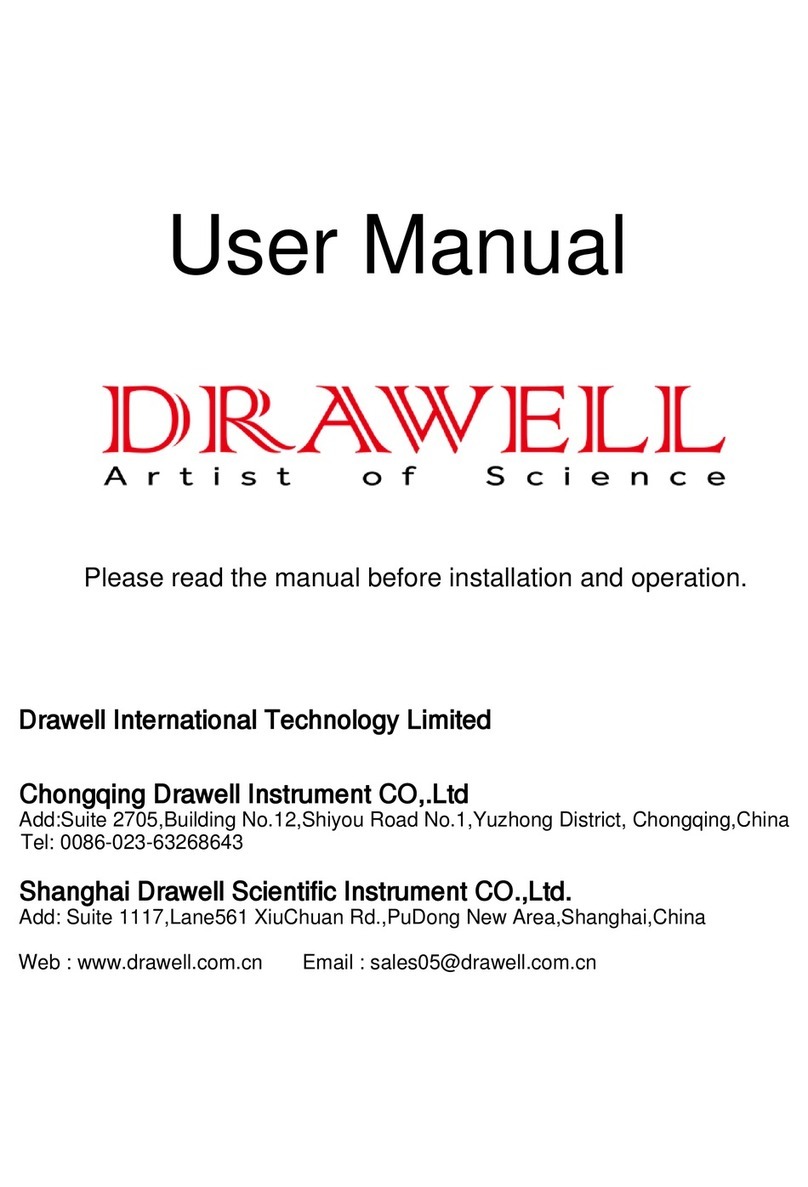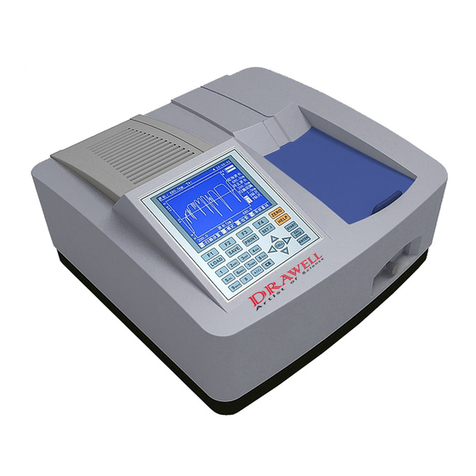Drawell DU-8200 Series User manual
Other Drawell Measuring Instrument manuals

Drawell
Drawell TrueX XRF User manual
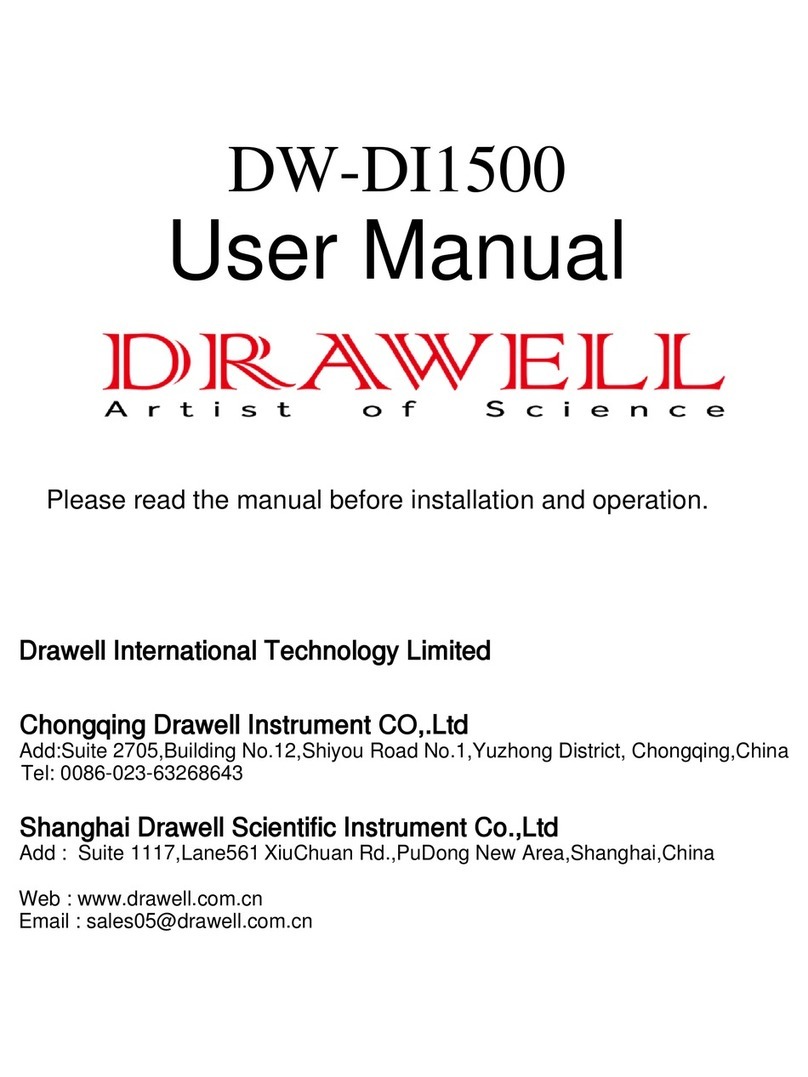
Drawell
Drawell DW-DI1500 User manual
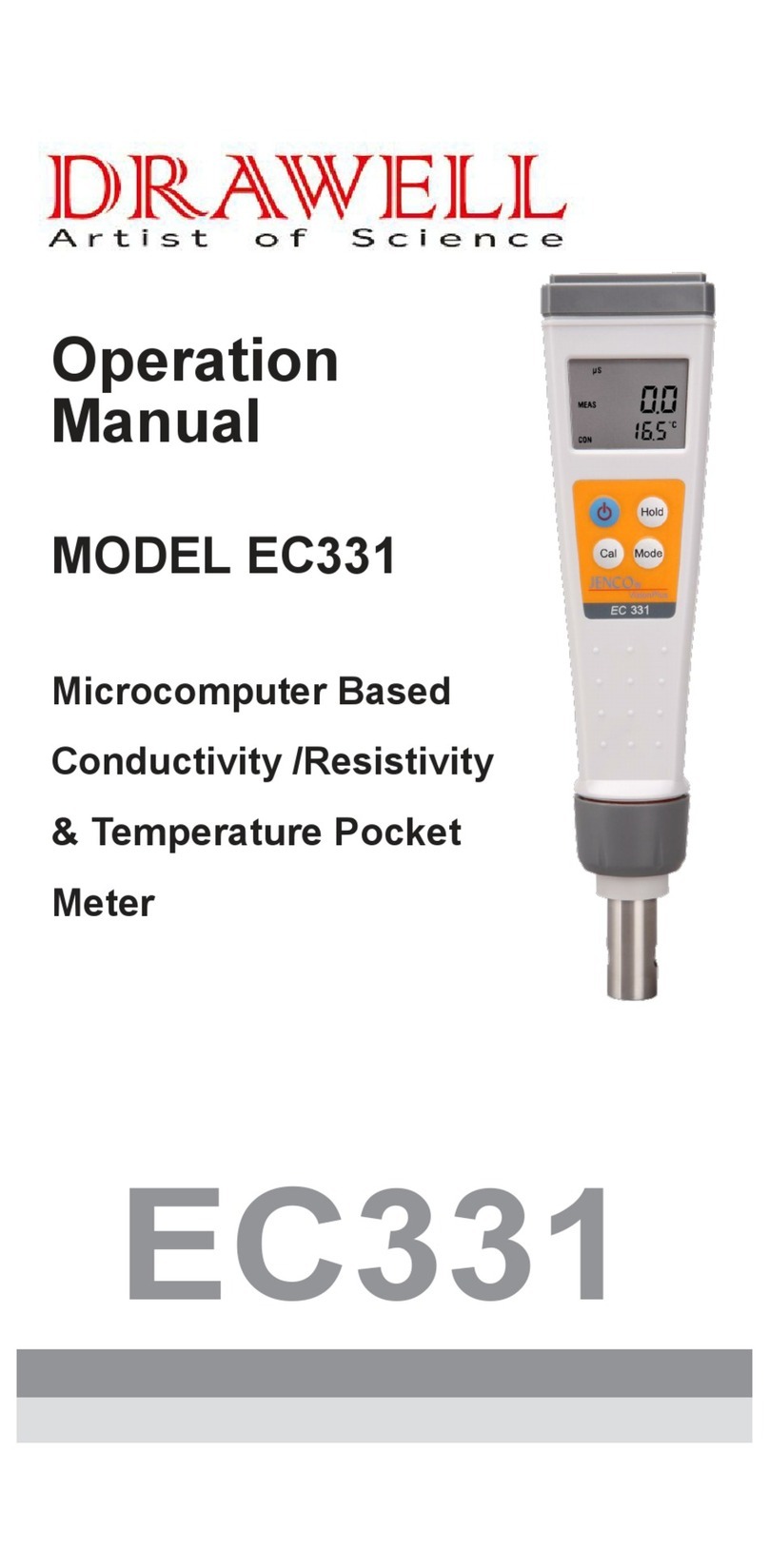
Drawell
Drawell Jenco Vision Plus EC331 User manual
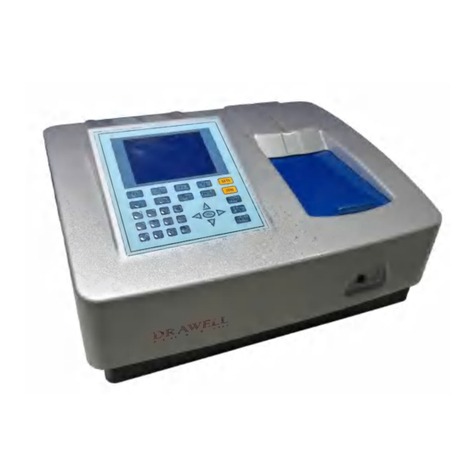
Drawell
Drawell DU-8800D Series User manual
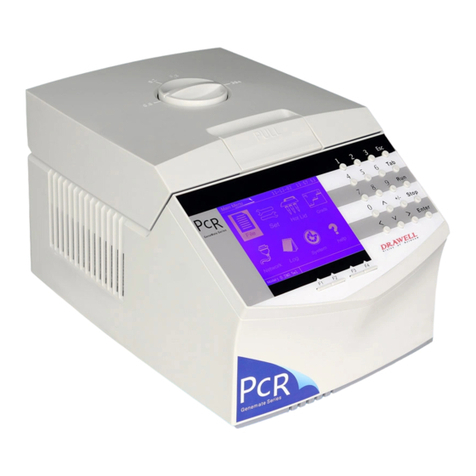
Drawell
Drawell K960-A User manual

Drawell
Drawell DW-PH6175 User manual

Drawell
Drawell DW-K2800 User manual
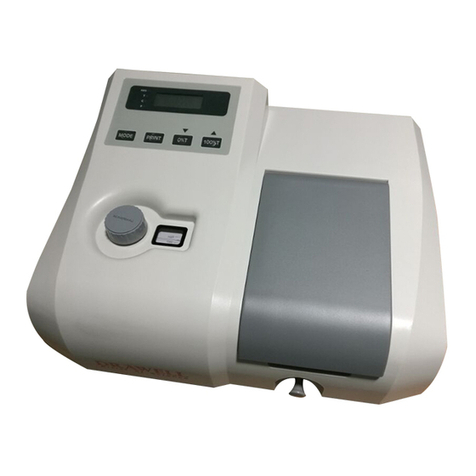
Drawell
Drawell DV-8000 Series User manual
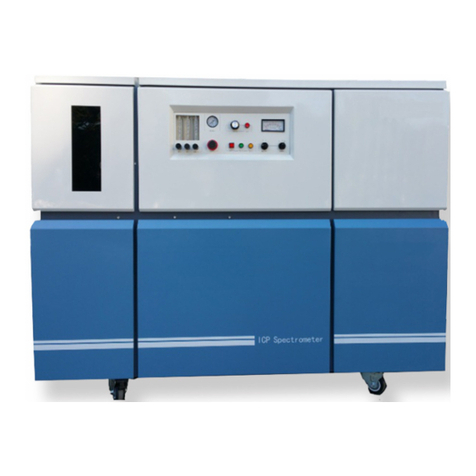
Drawell
Drawell DW-TY-9900 User manual
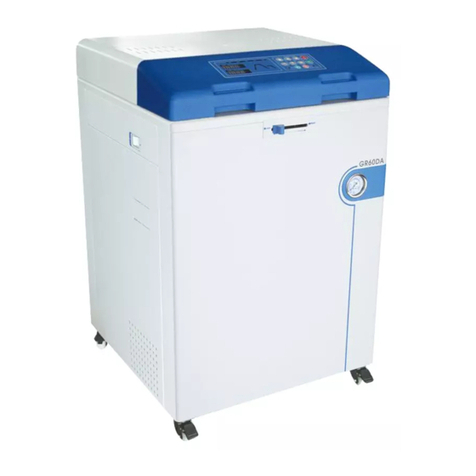
Drawell
Drawell DR Series User manual
Popular Measuring Instrument manuals by other brands

Powerfix Profi
Powerfix Profi 278296 Operation and safety notes

Test Equipment Depot
Test Equipment Depot GVT-427B user manual

Fieldpiece
Fieldpiece ACH Operator's manual

FLYSURFER
FLYSURFER VIRON3 user manual

GMW
GMW TG uni 1 operating manual

Downeaster
Downeaster Wind & Weather Medallion Series instruction manual

Hanna Instruments
Hanna Instruments HI96725C instruction manual

Nokeval
Nokeval KMR260 quick guide

HOKUYO AUTOMATIC
HOKUYO AUTOMATIC UBG-05LN instruction manual

Fluke
Fluke 96000 Series Operator's manual

Test Products International
Test Products International SP565 user manual

General Sleep
General Sleep Zmachine Insight+ DT-200 Service manual
